True crime tales: From body parts in Tiverton to murderous moms, local mysteries unsolved
Fall River’s most famous true-crime story, the case of Lizzie Borden, is known the world over. Everyone knows the gist: someone took an axe, and gave Andrew and Abby Borden several whacks, murdering the prominent couple in their home. With Lizzie acquitted and no other suspects, the crime has remained unsolved for 131 years and counting.
But the Fall River area is home to many more spine-tingling true-crime stories throughout its history — some solved, others not. Some are especially shocking for their time and even in ours.
Here, literally ripped from the headlines, are three true terrifying tales from across the SouthCoast.
It's not Lizzie Borden: New book looks at the Fall River axe murder you never knew about

Sarah Maria Cornell: Suicide, or murder at the hands of a minister?
The crime: On the morning of Dec. 21, 1832, in what was then Tiverton but is now Fall River’s Kennedy Park, farmer John Durfee made a horrifying discovery: the frozen body of a woman found hanging by the neck from a stake.
She wore a bonnet but “her hair hung over her face in great disorder,” reads testimony from Durfee. “Her shoes were off … her toes rested on the ground and her knees were bent forward within six inches of the ground.” She was Sarah Maria Cornell, a 29-year-old mill worker originally from Vermont.
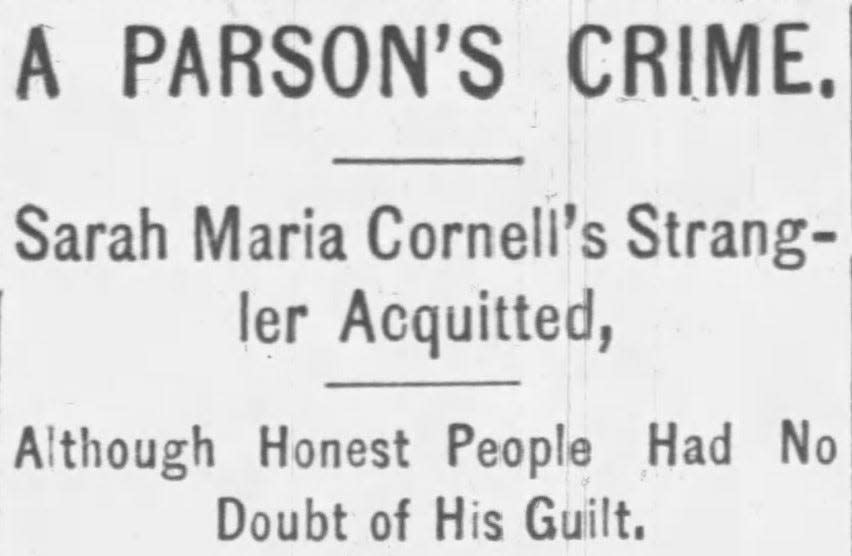
She was also unmarried and four months pregnant. Cornell lived in a boarding house on Spring Street, where among her personal items was found a cryptic note, dated Dec. 20: “If I should be missing, enquire of the Rev. Mr. Avery of Bristol, he will know where I am.”
This was the Rev. Ephraim Kingsbury Avery, a 33-year-old married Methodist minister who she had known for some time. At first thought a suicide, the case became a criminal investigation with Avery accused of having seduced Cornell and murdered her. Avery insisted he was innocent and fled to New Hampshire — to avoid angry mobs calling for his blood, he said — but was captured and hauled before a court in Newport in 1833.
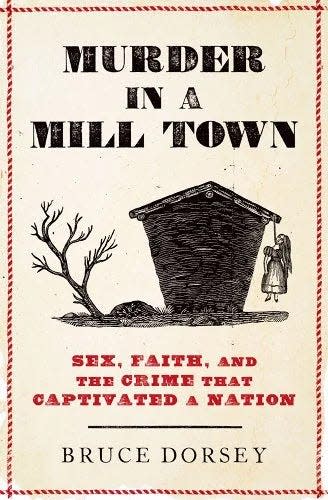
The trial: Cornell’s character was put on trial, with the defense noting that she’d come from a broken home and had legal troubles in her past, including charges of theft; they called her promiscuous and mentally unstable. The tactic worked, and Avery was acquitted of her killing.
The aftermath: Like in the Lizzie Borden case 60 years later, the public remained convinced Avery was a killer, and suspicion dogged him for the rest of his life. He moved away and became a farmer; Cornell was buried in Oak Grove Cemetery.
Unanswered questions: Was her death a murder or suicide? And why did Cornell write that note? To this day, it’s unknown.
More info: The case is the subject of “Murder in a Mill Town” by Bruce Dorsey, published in August. The book dives into the case and its significance as one of the most notorious murder cases of the 19th century.
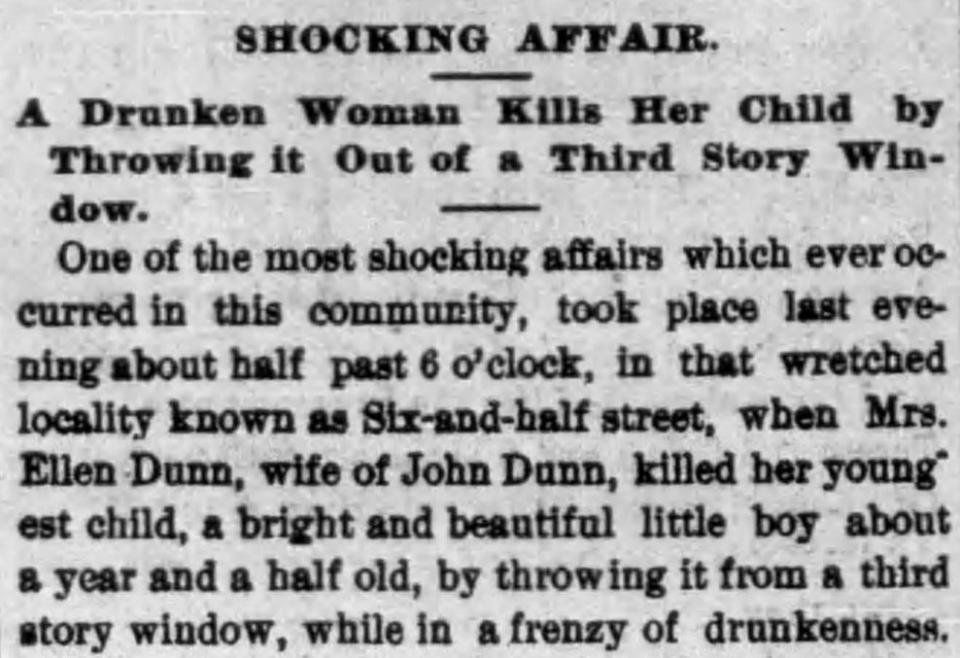
Dennis Dunn: Victim of his ‘unnatural’ mother
The crime: Horrified screams rang out on July 24, 1876, on what was then known as Six-and-a-half Street in Fall River, today Corneau Street. Hundreds of people looked upon the broken body of Dennis Dunn, a little under a year and a half old — still alive after having fallen from a third-story window.
Neighbors reported his mother, Ellen Dunn, had purposely flung the infant out of the window “in a frenzy of drunkenness.”
The neighborhood was dense and “wretched,” according to the Daily Evening News, wedged between the Troy and Union mills, and the Dunn family was poor. Ellen cared for five children under 12 while her husband, John, worked as a miner in Michigan. Neighbors said she was frequently drunk, though not known to be abusive.
Did Lizzie Borden use an alias? 5 facts you never knew about Fall River's infamous murders
But on this day, neighbors said, she had beaten her baby with a strip of wood, taken him by the legs, swung him against the walls and tossed him from the window of their apartment. Police and a neighbor broke into Dunn’s home and dragged her literally kicking and screaming to the police station. Doctors said Dennis lived several more hours but was beyond their help; among those who conducted his autopsy was Dr. Seabury Bowen, who years later would later examine the bodies of Andrew and Abby Borden.
The trial: There were many witnesses to this shocking crime, including Dunn’s oldest son Michael, 12, who said his mother was “as good as any mother could be” when sober, but a terror when drunk. That morning, she had sent him to the store for whiskey, promising to give up drinking afterward. In court, Dunn did not speak but kept her head bowed beneath a black veil. That September, a jury found that Dunn killed her son but could not indict her by reason of insanity.
The aftermath: Shortly after the crime, John Dunn took custody of his children and brought them to Michigan. Ellen Dunn was committed to a state mental hospital. From there, what happened to her is unknown.
Unanswered questions: What made Ellen Dunn attack her infant son? If she ever explained her actions, it has gone unrecorded.
Dead letter office: Lizzie Borden letter delivered 126 years later — to the Fall River Historical Society
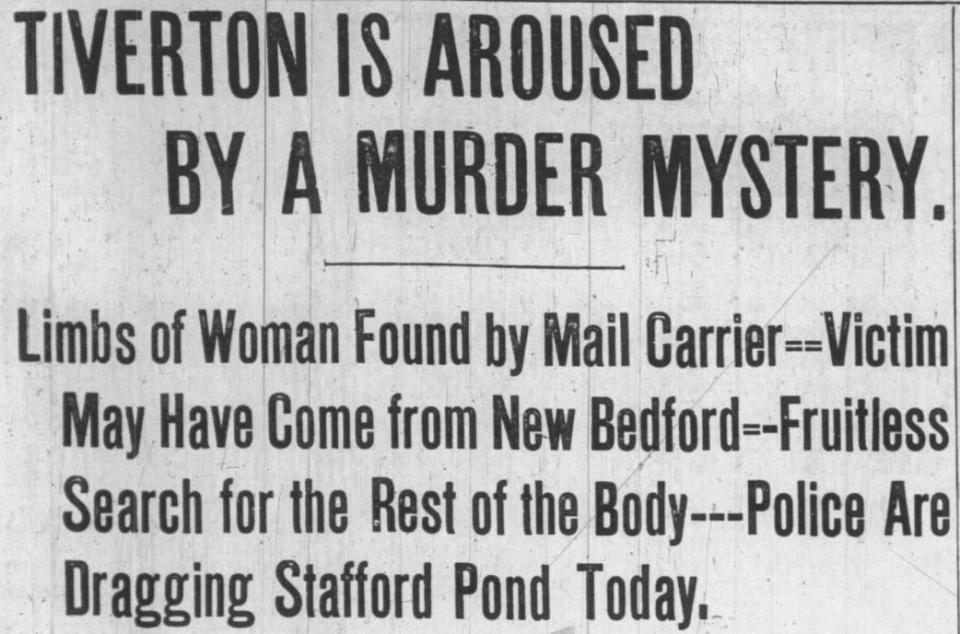
Amelia St. Jean: A horrifying discovery in Tiverton woods
The crime: In the early afternoon of Oct. 11, 1909, George Potter, delivering mail along Bulgarmarsh Road near Bliss Four Corners in Tiverton, made a gruesome find: two severed human legs stuffed in a canvas bag tossed into the woods. “The entire leg was exposed with the foot nearest to Potter,” wrote the Daily Evening News at the time. “The thigh of the right leg also lay on the ground.”
A forensic exam revealed that a hacksaw was used to cut through the bone.
The next day, a mile and a half away along Fish Road, a torso was discovered, revealing the victim to be a young blonde woman. Over the next few days, both arms and the rest of the right leg was found — but no head. An autopsy also discovered the woman had been pregnant and that an abortion had been attempted, but that it was unsuccessful and did not cause her death. She died, according to Dr. Edward P. Stimson, when "the murderer had cut the victim’s throat and then begun dismembering the body while the girl was still alive.”
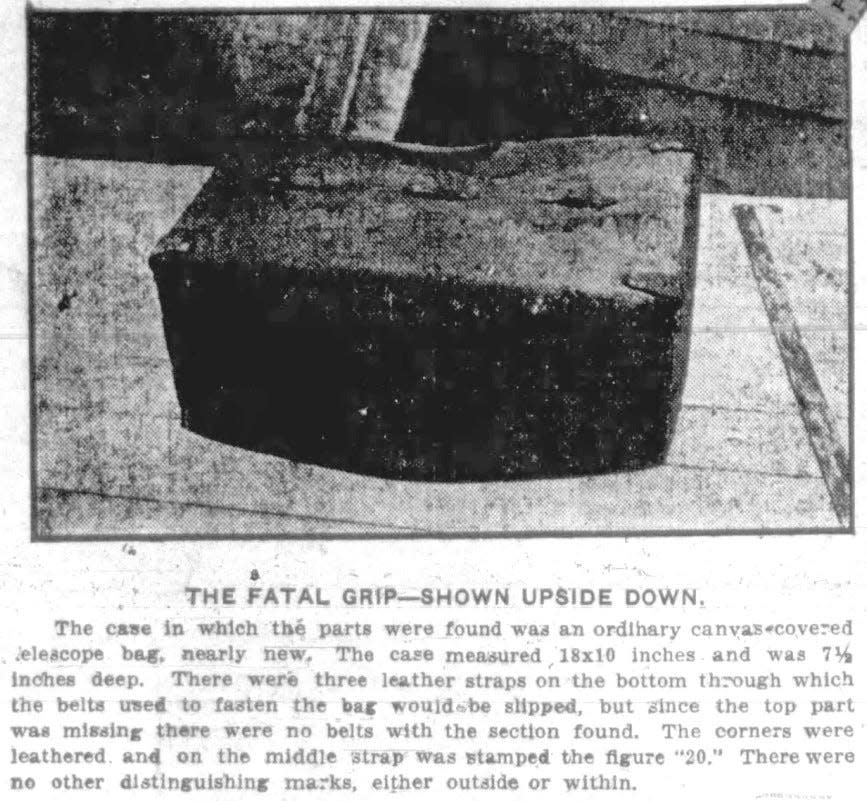
Without a head, identification was difficult. But based on distinctive birthmarks, she was identified as Amelia St. Jean, a 19-year-old who had moved to Fall River weeks earlier and had gone missing Oct. 8. She worked as a servant, and was known to be in “a delicate condition.”
A name on the canvas bag traced it to Frank L. Hill, a husband and father, and a “skin specialist” with offices at 138 Bedford St. Though Hill claimed he was innocent, police found torn fragments of St. Jean's clothing in his office. When taken to Superior Court in November, he changed his plea to guilty and confessed.
The trial: Hill testified that St. Jean had visited him on Oct. 8, asking for medicine to terminate her pregnancy. He said he turned her away, but she returned that afternoon with an abortion device of her own — which she inserted into herself. Hill claimed St. Jean suddenly dropped dead, he panicked and, rather than call authorities, dismembered her body and scattered the pieces — including her head, which he told police was off Robeson Street near St. Patrick’s Cemetery.
Hill's defense argued that St. Jean was largely responsible for her own death; the earlier report that she’d been dismembered while alive was not given credit. Hill pleaded guilty to manslaughter and was sentenced to seven to 10 years in state prison.
Unanswered questions: Was Hill’s story true, or was he covering up an even worse incident? As the only witness, he took the truth to his grave.
More info: The Dunn and St. Jean cases are both documented in "Parallel Lives" by Michael Martins and Dennis Binette of the Fall River Historical Society.
Dan Medeiros can be reached at dmedeiros@heraldnews.com. Support local journalism by purchasing a digital or print subscription to The Herald News today.
This article originally appeared on The Herald News: Sarah Cornell's death among Fall River's unsolved true crime mysteries

